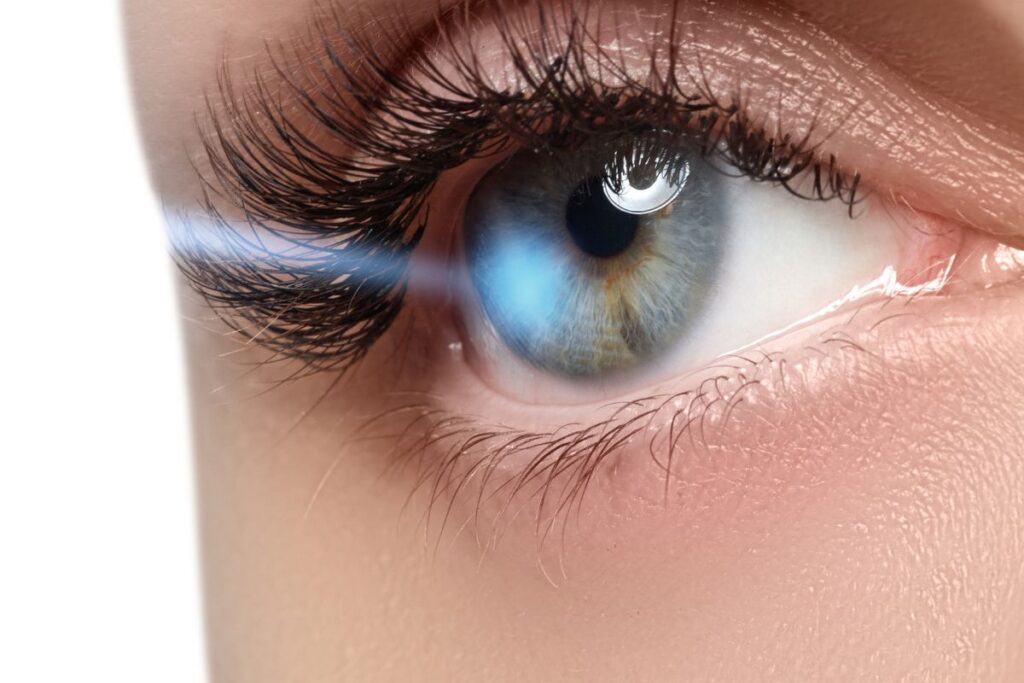Are you fed up with wearing contact lenses or glasses? Are you confused if LASIK surgery is a genuine procedure or just a costly craze? The question of whether LASIK is a long-term, safe treatment or just another medical fad is one that many people debate about. Let’s examine the facts and debunk some common misconceptions about LASIK surgery.
What is LASIK surgery?
LASIK, or Laser-Assisted in Situ Keratomileusis, is a common and quite popular eye surgery that reshapes the cornea to rectify refractive problems like nearsightedness (myopia), farsightedness (hyperopia), and astigmatism. The goal of LASIK is to improve your vision and eliminate or reduce your dependence on glasses and contact lenses. During the procedure, a laser is used to reshape the cornea, which allows the light to properly focus on the retina and improves vision.
How LASIK Surgery Works:
- A femtosecond laser or microkeratome is used to generate a tiny flap on the cornea.
- The underlying corneal tissue is then reshaped using a laser to correct the refractive error.
- Almost immediately after the flap is moved, the eye starts to recover.
Symptoms Treated with LASIK Surgery:
● Blurred vision due to nearsightedness
● Difficulty focusing on distant objects (for farsightedness)
● Distorted or blurry vision due to astigmatism
Myths About LASIK Surgery:
● Myth 1: LASIK is a risky procedure that causes permanent damage to the eye.
Fact: LASIK is one of the safest surgeries, with 99% of patients achieving 20/25 vision or better after the procedure. However, like any surgery, there are risks, and thorough consultation with your ophthalmologist is essential.
● Myth 2: Lasik is only for young people.
Fact: LASIK is safe for most people aged 18-40. However, patients over 40 with presbyopia may require other treatments as LASIK doesn’t correct age-related changes in the eye.
● Myth 3: LASIK surgery doesn’t work for everyone.
Fact: While LASIK works well for most people, not everyone is a suitable candidate, especially those with thin corneas, uncontrolled eye conditions, or certain health issues. Your ophthalmologist will evaluate your eligibility based on your eye health.
How to Prepare for LASIK Surgery:
1. Consultation: You will have to undergo a thorough eye exam to ensure you’re a good candidate for LASIK.
2. Stop Wearing Contacts: Discontinue wearing contact lenses for a few weeks before your appointment, as they can distort the shape of your cornea.
3. Post-Surgery Care: LASIK recovery is quick, but you’ll need to use prescribed eye drops, avoid strenuous activities, and wear protective eyewear at night.
FAQ Section
Can LASIK completely eliminate my need for glasses?
LASIK can significantly reduce or eliminate the need for glasses or contacts, but some people may still need glasses for reading or night driving, particularly as they age.
Is LASIK surgery painful?
Most patients experience only mild pain or discomfort during LASIK surgery, and it is generally painless as numbing eye drops are used during the procedure.
How long does it take to recover from LASIK?
Recovery is relatively quick. Many people notice significant improvement within a day or 24 hours, but full recovery can take a few weeks.
What are the potential risks of LASIK surgery?
Although LASIK is generally safe, people might experience dry eyes, glare, or halos around lights. These side effects usually go away within a few weeks, but do consult your ophthalmologist before making a decision.
How HealthPil Can Help:
HealthPil connects you to experienced ophthalmologists who can guide you whether LASIK is the right solution for you. If you’re considering LASIK surgery, schedule a consultation to receive a personalized assessment of your eye health and vision needs.
Disclaimer:
This content is for educational purposes only and should not replace professional medical advice. Always consult with a healthcare provider for accurate diagnosis and treatment.

